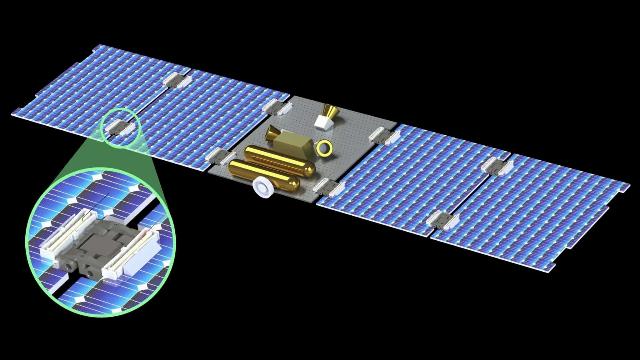There are not many ways to change the orientation of a spacecraft in space, all of them are well known in the industry and have long been tested by practice. And given the peculiarities of movement in space, it seems that it is almost impossible to invent something new to accomplish this task. Nevertheless, in the coming years, a satellite with a previously unseen precise orientation mechanism will appear in low-Earth orbit: it will literally wave its solar panels to turn around.
On Earth, you can push off to change your position in space. From anything: the surface you're standing on, the walls next to it, and in the case of an aircraft, from the air. But it is difficult to do this in space.
In low—Earth orbit, light satellites can orient along magnetic field lines - a convenient and energetically "cheap" way. You can also make the device oblong, then the gravitational field of the Earth will always turn its heavier end closer to the planet.
In low orbits, aerodynamic stabilization is available due to a very sparse, but still tangible atmosphere. At higher levels and in outer space, the pressure of sunlight and wind can be used. This is, perhaps, all the possibilities for spacecraft to "push off" from anything other than themselves to change their orientation. To turn more precisely, faster and more controllably, complex devices are required: for example, flywheel engines, as well as liquid, gas or electric jet engines.
As a rule, spacecraft use combinations of all these methods in various designs. But something fundamentally new for orientation systems has not been used in cosmonautics since its inception half a century ago. The more surprising is the rapid growth of the previously unknown American startup Samara Aerospace.
Let native speakers of the Russian language not be confused by the name — it has nothing to do with the geography of Russia, nor with Middle Eastern or South Asian names. The word samara means "winged seed", "winged". The company's logo shows just something similar, since this image reflects the essence of the technology it has developed.
The Samara Aerospace development concept is as follows. The small spacecraft is equipped with symmetrical folding solar panels, the segments of which are connected not by rigid hinges, but by flexible ones. These flexible hinges are made of piezoelectric material. Under the influence of current, it can rapidly contract or relax, causing the segments of the solar panels to oscillate relative to the center of mass of the spacecraft. The principle of operation is illustrated in the video above.
If such oscillations are performed with high frequency, they turn the entire spacecraft into a single flywheel engine. Because vibration is the rapid movement of an object over a very short distance. Thus, the solar panels become the same momentum-preserving mass from which the device is repelled to change orientation.
Interestingly enough, according to Samara Aerospace, vibration should not interfere with the operation of high-precision satellite systems. On the contrary, such actuators are able to compensate for parasitic vibrations from other sources.
The technology is called Multifunctional Structures for Attitude Control (MSAC) — "multifunctional structures for attitude control". The startup has already demonstrated the work of MSAC in the laboratory, and the prototype mounted on a pneumatic bearing rotated perfectly around its vertical axis. The work on the initial stage of technology implementation was funded by the startup accelerator Techstars, they were completed in early 2024.
After the success with the prototype, the startup immediately attracted the attention of public and private investors. In January, the US National Science Foundation (NSF) allocated Samara Aerospace 275 thousand dollars as support for the creation of a flight prototype. For the same purpose, according to the SpaceNews portal, the structure of the US Air Force called SpaceWERX allocated a grant of $ 1.25 million to the startup. According to the terms of the contract, Samara Aerospace should use this money to enter into a partnership with a company engaged in remote sensing of the Earth and test MSAC on one of its satellites.
The exact timing of the project is not specified, but the pace of work of Samara Aerospace is impressive. The startup went from the foundation to the demonstration of the prototype in two years.
Now the company's goal is not to let investors down and launch a flight prototype. Only then will the National Science Foundation finance the further refinement of the technology to commercial implementation — the second phase of the contract promises an additional one and a half million dollars. The money is not fantastic by the standards of the aerospace industry, but it is significant for a start-up company.

